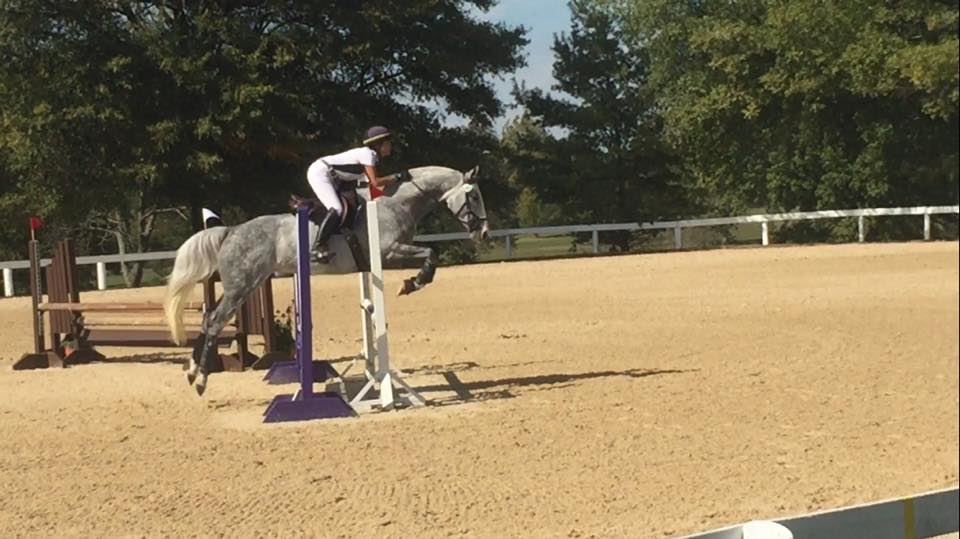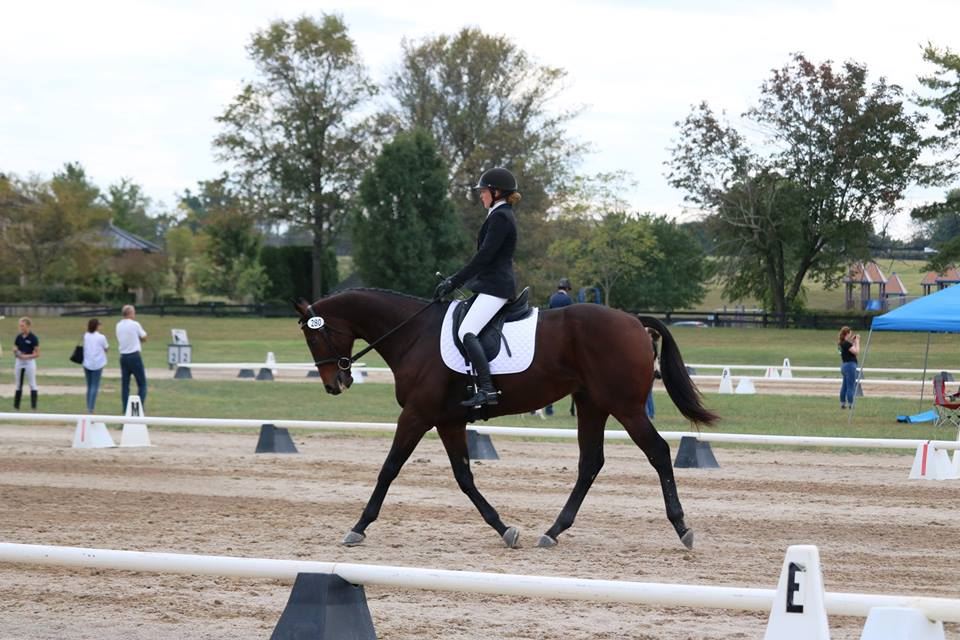MSEDA had a strong representation at the 2017 Retired Racehorse Project’s Thoroughbred Makeover, with members competing in eventing, field hunter and dressage.
By Sarah E. Coleman

Over 500 horses headed to the Bluegrass to compete in the Retired Racehorse Project’s $100,000 Thoroughbred Makeover, which took place Oct. 5-8 at the Kentucky Horse Park. Designed to increase the demand for off-track Thoroughbreds, the competition highlights horses in second careers (some that seem more unusual for retired racehorses) and showcases the versatility of the breed.
Horses at the Makeover could be entered in one or two of 10 disciplines: barrel racing, competitive trail, dressage, eventing, field hunter, freestyle, polo, show hunter, show jumper and working ranch.
Each horse that competed in the Makeover was required to have the following:
- Be registered with The Jockey Club and have a lip tattoo
- Have a published work after July 1, 2015
- Must not have begun training for a second career prior to Dec. 1, 2016
Two MSEDA members had horses competing at the Makeover: Mandy (Alexander) Weissmann and Jeannine Buhse.
Mandy Weissmann and Mister Mardi Gras
Mandy competed her gelding, Mister Mardi Gras, in both Field Hunter and Eventing disciplines. Mister Mardi Gras is by Belong to Me and out of Miss Marta, and was bred by Lothebach Stables. “Krewe” as he is affectionately named, earned over $1 million -- $1,194,027 to be exact -- in 58 starts with 11 wins. Trained by Chris Block, Krewe’s last race was on Sept. 3, 2016, at Arlington Park.

Leading the Field Hunters after the first day of competition, Mandy was asked to go on a mock hunt with Krewe, complete with hounds in the steeplechase infield, then asked to jump a cross-country course individually; the course included crossing water, and opening and closing a gate. The individual test also included a hand gallop to a halt. Mandy truly went for it, opening Krewe up into a full gallop (the first since she had gotten him) and then coming to a (tough!) halt at the judge’s stand.
Mandy ended up reserve out of 31 entries in the Field Hunter division and 67th out of 97 entries in Eventing. Krewe was also the winningest former racehorse of all entries at the 2017 Makeover.
Jeannine Marie Buhse and Rockport Jewel
Rockport Jewell is a 2010 Iowa-bred mare who raced 30 times, mostly at Prairie Meadows in Iowa. She raced for four years, earning $74,039, with her last start in August of 2015. Pulled from a kill pen in February of 2016, the mare’s bad luck continued, with a bout of bad colic, an infection in her IV and then multiple hoof abscesses that prevented her from getting any real training before Jeannine went to see her in September.

For some reason, Jeannine connected with the mare, bringing her home to Louisville to be a trail partner—the Makeover was not even on her radar! But the trails would have to wait as Jewell’s bad luck continued—her entire sole came off from a very bad sub-solar abscess. With time, rehab, patience, phenomenal vets and farriers, and TLC, the mare went sound and she and Jeannine deepened their bond.
Learning that the mare was still eligible for the 2017 Makeover, Jeannine thought she would aim her for the Competitive Trail division, but Jewell (now named “Good Juju”) really enjoyed jumping, so Jeannine entered her in the Eventing and Dressage divisions. They completed in Eventing (and were tied for the highest score in cross-country) and finished solidly in the middle of the pack in Dressage.
More MSEDA Members in the Makeover
Three additional MSEDA members competed at the Makeover:
Nick Larkin rode Loves Not Fair (known as Lebron) in the Eventing portion of the Makeover for a fantastic fourth-place finish. The Makeover was Lebron’s first show (!!) and he earned the highest score on cross-country out of the 90-plus Thoroughbreds competing. (Did you notice that BOTH the tied high scores on XC were MSEDA members?!).
Ali Wilaby finished with a WIN in Dressage and a second-place finish in Eventing on the 2012 gelding Chapter Two. Chapter Two is by More Than Ready and was bred in Kentucky by My Meadowview LLC. His last race was at Turfway Park, and he had 15 lifetime starts with $71,952 in earnings. We will hear more from Ali in an upcoming MSEDA issue.

Whitney Morris brought two horses to this year’s Makeover: Bad Boy Rocket whom she showed in Dressage and Flying Candy Ride, whom she showed in Eventing. Rocket is a 2012 model by Mineshaft who was bred by Glencrest Farm LLC and Kempton Bloodstock LLC. He sold at auction for $475,000 and went on to win $19,640 in two starts. His last start was at Remington Park. Flying Candy Ride is by Candy Ride and was bred by Martin Wygod and Herman Sarkowsky. He made 16 starts, winning $23,946 and he last raced at Turfway park.

Whitney finished 24th in dressage with Bad Boy Rocket.
Congrats to Mandy, Jeannine and all MSEDA members on their stellar performances at the 2017 Thoroughbred Makeover!
Interested in competing in the Makeover in 2018? Learn more here: www.retiredracehorseproject.org
